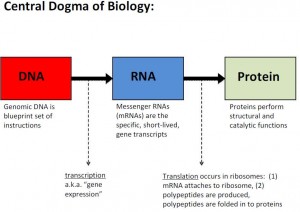One of the issues that was raised in the recent Microbiology of the Built Environment conference in Boulder was sampling, specifically what and how is the material collected for subsequent biological analysis. Industrial hygienists and those tackling questions of exposure have devoted a lot of time to developing methods for how to study the indoor …
I’ve been remotely following the Sloan MBE meeting discussions (happening in Boulder, CO this week), and yesterday there was a lot of Twitter discussion focused on data visualization tools. How do we make sense of the millions of DNA sequences we generate from microbial ecology projects in the Built Environment? I thought I’d use this opportunity to highlight …
For those interested in molecular studies of fungi these two posts by Jenna Lang may be of interest: What the fungi do I do with my ITS library? What the fungi do I do with my ITS library (Part 2) Jenna is a post-doc in my lab and has worked on many different microbiome related projects over …
Registrants for the March AAAS Symposium are recipients today of the following message from Anette Olsen at AAAS. “I’d like to let you know that the videos of each panel is now online, but they currently remain unedited. We anticipate another two weeks before the edited versions are placed online. In the meantime, here is …
Jordan Peccia has posted the slides from his tutorial, Molecular methods for bioaerosol analysis on Slideshare. If you would like to get a quick overview of molecular-biology based methods, this is a painless, accessible way to do it. You are encouraged to post your comments and questions after you review the slideshow. We hope to …
A really interesting aspect of Japan’s most recent and disastrous earthquake and tsunami involves microbial impact on cultural property and documents. Even as a student in microbiology, I never considered how these natural disasters could exacerbate the problem of biodeterioration. A 2013 article by Gu et al summarizes some important information presented at The International …
You can download the database of over 360 publications that report characteristics of the indoor environment along with the microbes found in the studies. Each publication is entered as a record and includes citation, abstract, keywords, organisms, substrates, and environmental conditions as reported by the authors. The database in MS Access format is searchable for …
We’ve just added a new link on our resources page — a whole lot of lectures by Keith Redway of the University of Westminister. The list includes the following: Recombinant DNA Technology & GM (3BIO7M4, 3BIO7X1) Laboratory Management & Safety (3GAM405) Medical Microbiology (3MED666) History of Microbiology Medically important bacteria Transfer of antibiotic resistance – …
Nice new paper from Karen Dannemiller et al. (the senior author is Jordan Peccia from Yale): Citation: Dannemiller, K. C., Lang-Yona, N., Yamamoto, N., Rudich, Y., & Peccia, J. (2013). Combining Real-Time PCR and Next-Generation DNA Sequencing to Provide Quantitative Comparisons of Fungal Aerosol Populations. Atmospheric Environment in Press. The abstract is copied below. Basically, they …
Studies looking at the microbiology of the built environment find a lot of diversity. Sometimes it seems like anywhere you look for your target critter, you can find it. More and more these expeditions rely on sequencing DNA, which can detect all kinds of cells: in addition to ones that are living or dormant, PCR …

